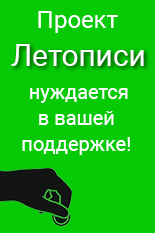Ecological system of Wiki
(→Wiki - miltiagent model) |
м (→References) |
||
| Строка 27: | Строка 27: | ||
=== References === | === References === | ||
| − | # Patarakin E & Yarmakhov B. (2007) Everyday network culture as an approach to | + | # Patarakin E & Yarmakhov B. (2007) Everyday network culture as an approach to classification issues solution, Educational Technology & Society, vol. 10 N 2 2007 |
| − | classification issues solution, Educational Technology & Society, vol. 10 N 2 2007 | + | |
# Lawmaking 2.0 by Boris Yarmakhov, Vasiliy Burov, Evgeny Patarakin, Computational Social Science and the Wisdom of Crowds (NIPS 2010), Canada | # Lawmaking 2.0 by Boris Yarmakhov, Vasiliy Burov, Evgeny Patarakin, Computational Social Science and the Wisdom of Crowds (NIPS 2010), Canada | ||
[[Category:Вики]] | [[Category:Вики]] | ||
Версия 08:04, 28 февраля 2011
Содержание |
Wiki as a digital ecological system
Ecologies and ecosystems concepts transferred from the world of biology to the social world in order to explain interrelations between different agents and their environment. The concept of knowledge ecology in modern world is closely linked with an idea of wiki as an ecological system. In this hypertext system different agents create, recycle and reuse various text blocks. We can use the wiki for a better understanding of the principles of sustainability and viability of the learning communities.
Among the variety of ways to organize collaboration activities the most interesting is Wiki. Nowadays wiki is considered the most promising environment for the formation of a network of communication and participation in training activities in which students can use ready-made materials (texts, templates, diagrams, drawings, photographs) to create their own products. In this presentation we evaluate wiki as an digital ecological system. This environment allows to collect data which can be used to assess a viability and a sustainability of the network community. To simulate the ecological wiki system, we used multi-agent environment, such as StarLogo and NetLogo, which can simulate the interaction of many agents. To visualize the relationships and connections between authors and pages we used GraphViz program. Visualization is based on history of articles editing and allows distinguish groups and communities without leaving the wiki.
Wiki as a bipartite graph
http://en.wikipedia.org/wiki/Bipartite_graph

Wiki - miltiagent model
NetLogo model
Wiki Starlogo TNG model =
References
- Patarakin E & Yarmakhov B. (2007) Everyday network culture as an approach to classification issues solution, Educational Technology & Society, vol. 10 N 2 2007
- Lawmaking 2.0 by Boris Yarmakhov, Vasiliy Burov, Evgeny Patarakin, Computational Social Science and the Wisdom of Crowds (NIPS 2010), Canada
